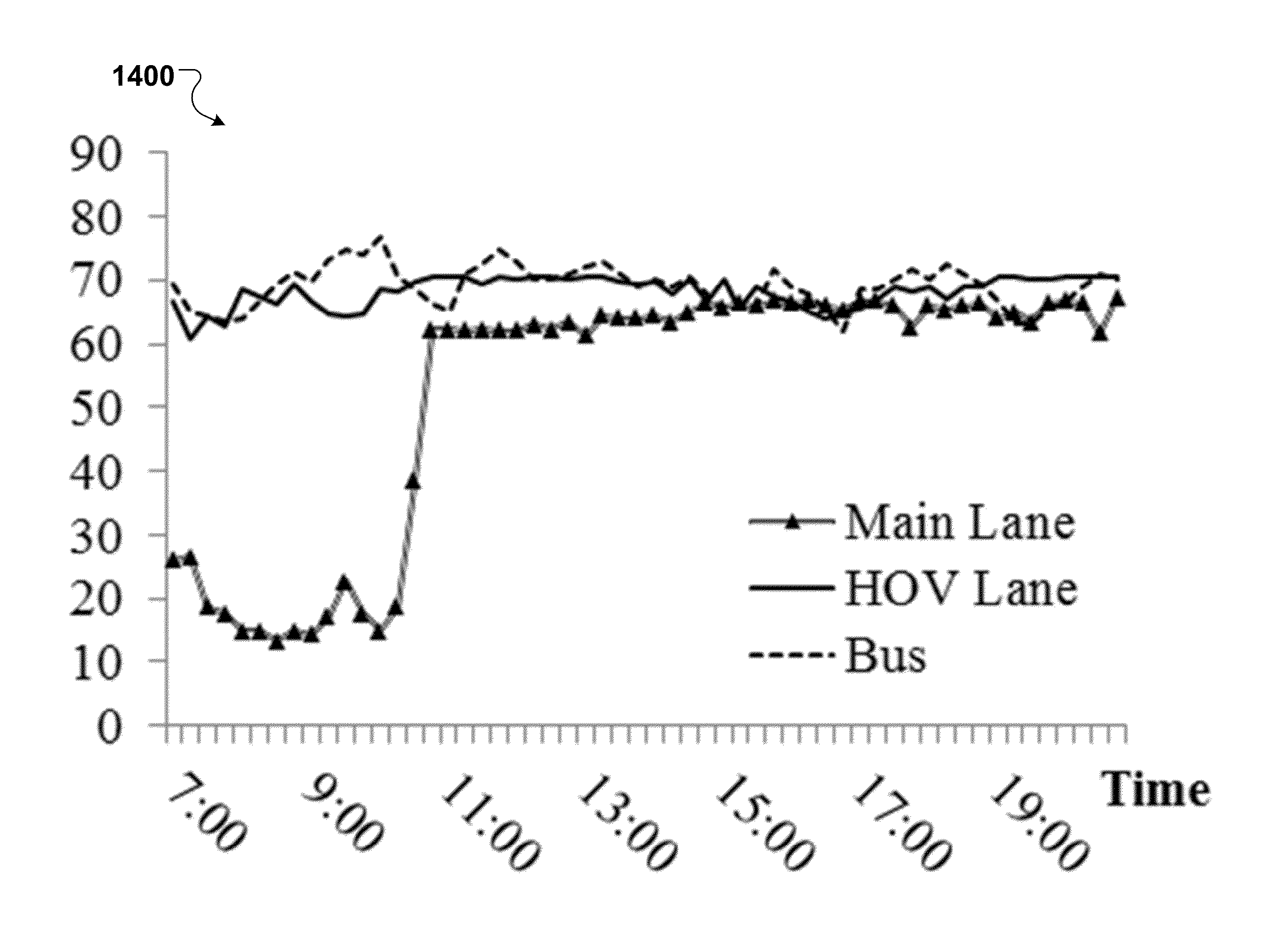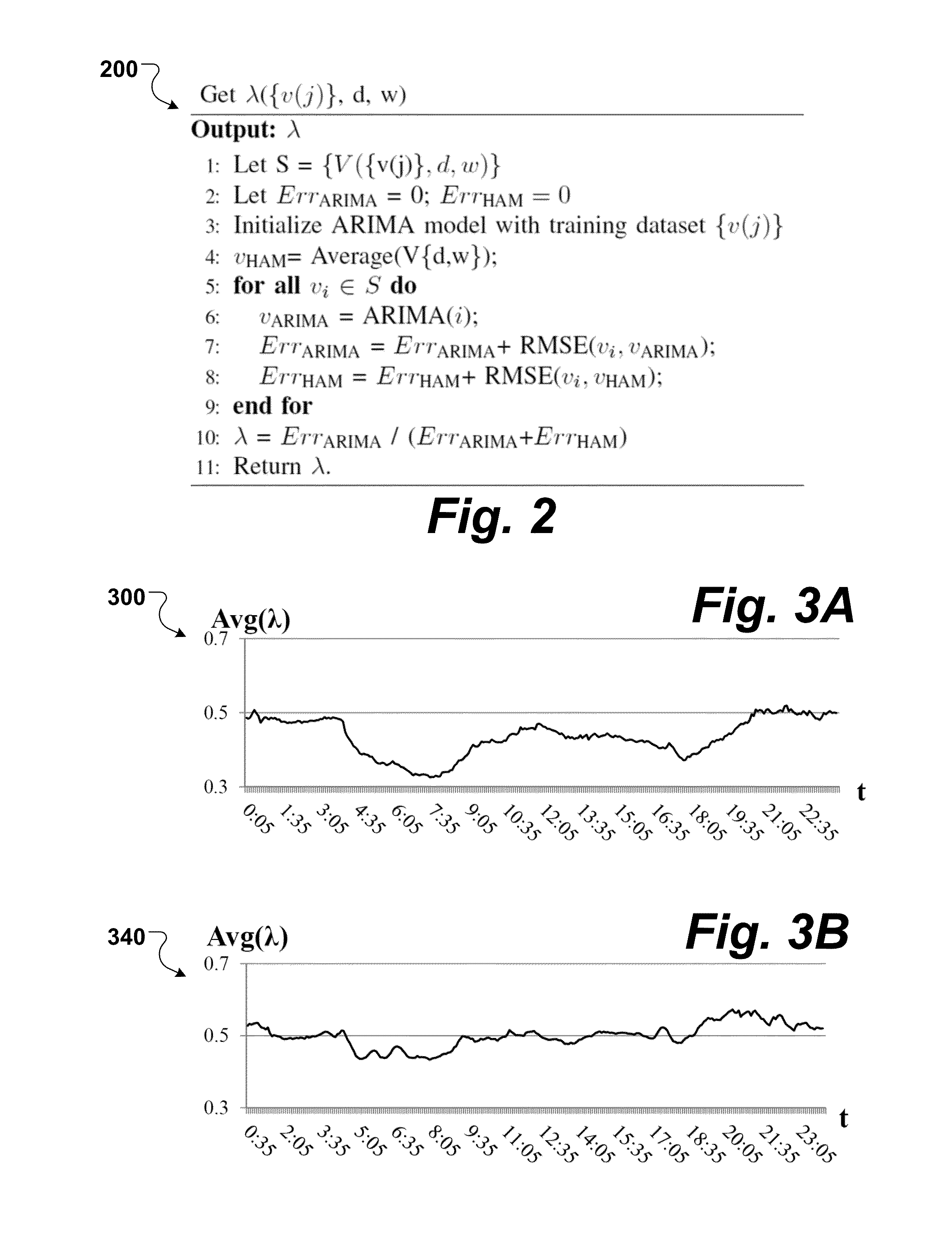Traffic Prediction Using Real-World Transportation Data
a technology of real-world transportation and traffic prediction, applied in the direction of inference methods, instruments, computing, etc., can solve the problems of inability to predict traffic in case of events, and traditional prediction approaches that treat traffic data streams as generic time-series fail to forecast traffic during traffic peak hours, so as to achieve a remarkable improvement in prediction accuracy
- Summary
- Abstract
- Description
- Claims
- Application Information
AI Technical Summary
Benefits of technology
Problems solved by technology
Method used
Image
Examples
Embodiment Construction
[0033]The previous traffic prediction approaches can be grouped in two main categories: Simulation Models and Data Mining Techniques. Some traffic prediction techniques fall into the first category and use surveys and / or simulation models. For example, S. Clark, “Traffic prediction using multivariate nonparametric regression”, proposes a non-parametric regression model to predict traffic based on the observed traffic data. In other cases, authors use microscopic models upon trajectories of individual vehicles to simulate overall traffic data and further conduct prediction (see J. D. Gehrke et al., “A natural induction approach to traffic prediction for autonomous agent-based vehicle route planning”, and M. Ben-akiva et al., “DynaMIT: a simulation-based system for traffic prediction”). In another case, the traffic flow of a road segment is estimated by analyzing taxi trajectories. The major limitation of such studies is that they rely on sporadic observations and are often restricted...
PUM
 Login to View More
Login to View More Abstract
Description
Claims
Application Information
 Login to View More
Login to View More - R&D
- Intellectual Property
- Life Sciences
- Materials
- Tech Scout
- Unparalleled Data Quality
- Higher Quality Content
- 60% Fewer Hallucinations
Browse by: Latest US Patents, China's latest patents, Technical Efficacy Thesaurus, Application Domain, Technology Topic, Popular Technical Reports.
© 2025 PatSnap. All rights reserved.Legal|Privacy policy|Modern Slavery Act Transparency Statement|Sitemap|About US| Contact US: help@patsnap.com



